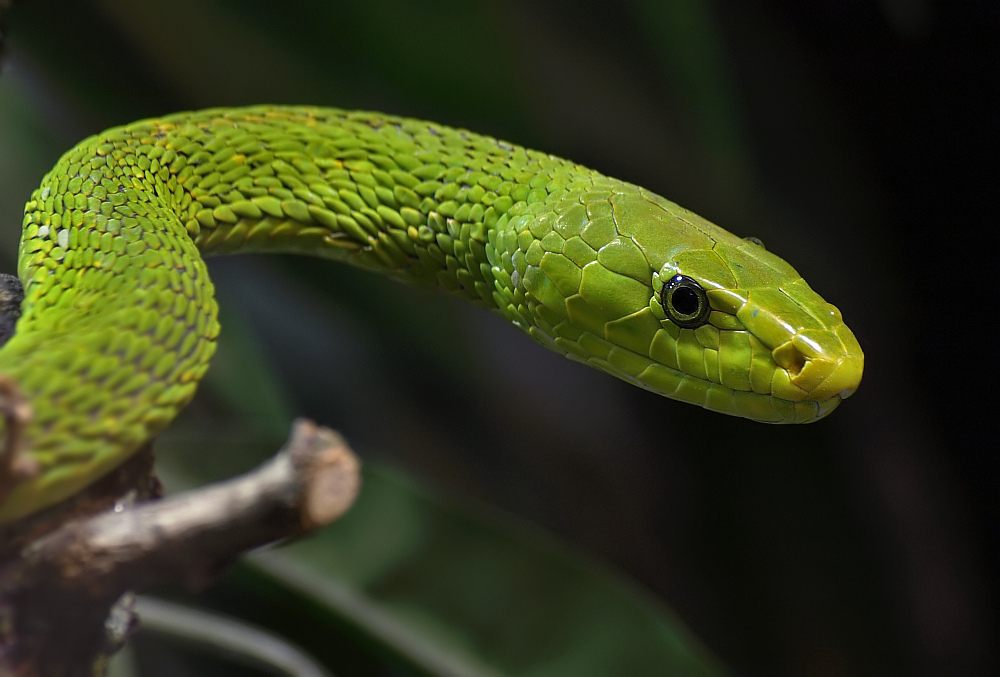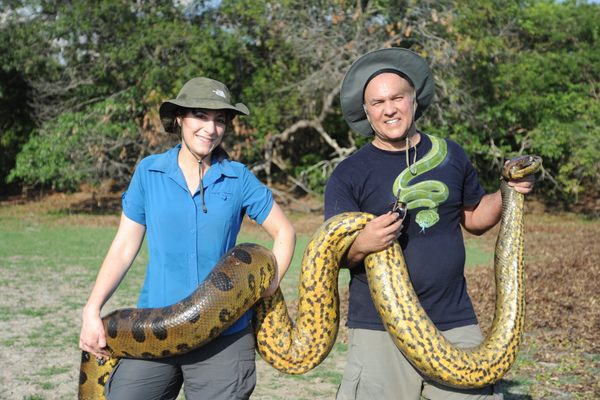This Week in Google News Alerts: ‘Snakes Found’

Green mamba. (Photo: Orest/Wikimedia Commons)
Want to know about all the heroic cats, insect swarms, and medieval reliquaries of the world but not sure where to look? Welcome to the Week in Google News Alerts, where we profile some of the most rewarding terms to keep as an email alert. (To sign up for one, go here.) This week’s search term of art is “snake found.”
This search term came to me after a friend became the proud owner of a baby corn snake. Corn snakes are widely considered one of the most appropriate breeds to keep as a pet, but—as my friend smartly pointed out—are, like all snakes, infamous escape artists. That’s probably why my “snake found” Google Alert sends me a story nearly every day.
This week, let’s look at some of the best snakes found.
The most seasonally-appropriate snake discovery this week occurred in Australia, as a Sunshine Coast family discovered a green tree snake sleeping at the top of their Christmas tree, perhaps hoping for a new life as a tree-topper. Similarly, a 4.5-foot grass snake relaxing in a Christmas tree lot in England got a little tired of the foot traffic and found a new home inside the engine housing of a BMW, to the driver’s considerable alarm. In both cases, the snakes were native species and were safely relocated to their natural habitats.
In much more alarming news, a highly venomous—and highly pregnant—eastern brown snake was found under a woman’s fridge in Adelaide. A professional snake catcher described the area underneath the fridge as “the perfect place for a snake,” which was surely very reassuring to the homeowner. After being captured, the snake went on to lay 12 eggs, guaranteeing at least 12 more snakes to be found at a later date.
However, not all snakes found are native species. A Florida jogger realized what appeared to be a fallen tree branch was actually a likely an escaped (or released) pet. Escaped, non-native snakes are a serious wildlife issue in Florida, with breeds such as the Burmese python wreaking havoc on the ecosystem of the Everglades and other areas. Similarly, California has found an alarming and unprecedented number of yellow-bellied sea snakes over the past year, with the latest discovery made on Tuesday. The sea snakes—which frequently wash up in Australia (the preferred continent of highly venomous snakes)—are migrating farther north due to the water-warming effects of El Niño. While Tuesday’s snake is being sent to the Scripps Institution of Oceanography, Australians have a slightly more cavalier attitude, with one expert encouraging people to “throw [the snakes] back in”.
In the hopefully-soon-to-be-found category, we have the monster snake of Nerang National Park. Despite having been spotted by various individuals over the past 18 months, park workers have been unable to catch the python, which may be up to 16 feet long.
Finally, a local Pennsylvania newspaper unearthed a historical found snake Saturday, with the story of a 35-foot snake being discovered in an area home in 1941. Given that the largest recorded snakes top out at around 30 feet, the story seems fairly unlikely. If the snake did exist, the homeowners missed out on the $50,000 reward offered by the New York Zoological Society for the delivery of a live, 30-foot snake.
Snakes: always escaping, sometimes being found.
Other Alerts of Note
Let’s look at the most interesting stories from my other Google Alerts this week.
“Ancient ruin” Justin Bieber managed to bring ancient Mayan ruins into the headlines this week when he was instructed to leave after climbing onto roped-off structures at the Mayan fortress at Tulum. Tabloids are luridly adding that Bieber chose to remove his pants during his climb, although the only source for this version of events is Spanish-language newspaper La Razón. No word on whether it’s too late for the pop singer to say “Sorry.”.
“Haunted” KTHV takes us inside Little Rock, Arkansas’ most haunted house, now a AAA 4-diamond bed-and-breakfast. “It was built with a lot of love and a lot of revenge,” according to the owner, and it’s currently up for sale.
“Mummy” In 1991, a frozen Copper Age mummy was discovered in the Otzal Alps. Because he was so well-preserved, Otzi has proven a valuable window into the lives of Copper Age humans. Now, researchers have made startling discoveries about human migration patterns by examining the bacteria in his stomach, including the possibility of a previously-unknown mass human migration from Africa.
“Infested” Similarly, although the Roman Empire is known to have introduced a new level of sanitation and hygiene to human civilization, new research indicates that its citizens remained infested with parasites. Researcher Piers Mitchell believes this may have been due to Roman diet, which included uncooked fish, and notes that these parasites weren’t unknown to Roman medical practitioners, although their treatment methods left something to be desired.
I hope you enjoyed this week’s news bounty. Please suggest other topics for news alerts and keep your eyes peeled for unexpected snakes!







Follow us on Twitter to get the latest on the world's hidden wonders.
Like us on Facebook to get the latest on the world's hidden wonders.
Follow us on Twitter Like us on Facebook